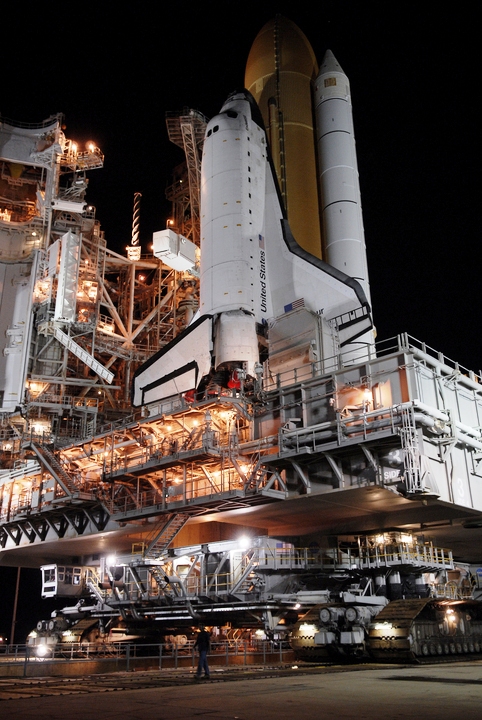Check out the news release:
RELEASE: 09-127
NASA’S SHUTTLE PROGRAM HANDS OVER LAUNCH PAD TO CONSTELLATION
CAPE CANAVERAL, Fla. — The May 31 transfer of Launch Pad 39B at NASA’s Kennedy Space Center in Florida from the Space Shuttle Program to the Constellation Program is the next step in preparing the first flight test of the agency’s next-generation spacecraft and launch system. The Constellation Program is developing new spacecraft — including the Ares I and Ares V launch vehicles, the Orion crew capsule, and the Altair lunar lander — to carry humans to the International Space Station, the moon and beyond.
Since the late 1960s, pad B has been instrumental in human spaceflight programs, such as Apollo, Skylab and the space shuttle. The pad originally was built for the Saturn V rockets to launch the Apollo capsules to the moon. In July 1975, the pad was modified to support space shuttle operations. The first space shuttle to lift off from pad B was Challenger in January 1986.
The handover took place Sunday after space shuttle Endeavour was moved to Launch Pad 39A. The ground operations team will finish modifying pad B for the Ares I-X rocket launch. Modifications will include removing the orbiter access arm and a section of the gaseous oxygen vent arm and installing access platforms and a vehicle stabilization system.


Exciting, but also incredibly sad.
If they are disassembling parts of this pad’s gantry structure (that required for Shuttle operations) how are they going to deal with the “rescue shuttle” for each of the remaining shuttle missions?
There is no need of a rescue shuttle for any of the remaining missions because they are all going to the ISS. The rescue shuttle was only needed for the Hubble repair mission last month, because Hubble’s orbit is very different from the space station, and it would require 100’s of tons of extra fuel to change from one orbit to the other. (Not just a little extra fuel, a large amount compared to the fuel needed to get into orbit in the first place.) So going to the ISS to await rescue was not an option for the Hubble mission. On the other hand, if they were to discover a problem with a shuttle on an ISS mission, the astronauts could wait there for several months awaiting rescue on another shuttle or even several Soyuz’s. There’s plenty of air and food and water. If worse came to worse, the current ISS crew could return to Earth in their Soyuz capsules, and the shuttle crew could wait 6-8 months for the next batch of Soyuz’s to be launched (empty, but on their normal schedule.) They would have to play a game of musical chairs to get everyone down, because each Soyuz can only hold 3 astronauts, but the regular schedule is to launch 4 of them a year, and they can dock with the station automatically, so they can be launched empty.